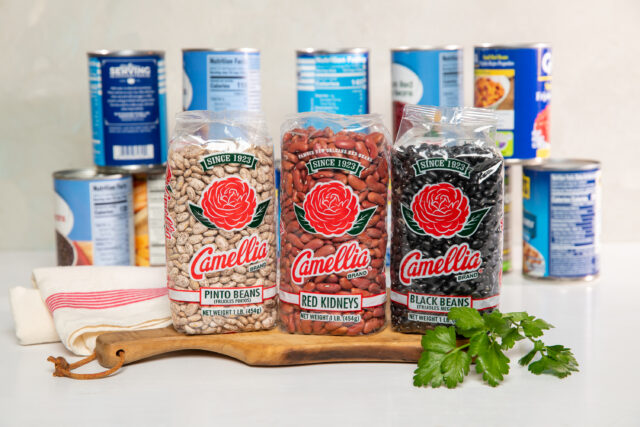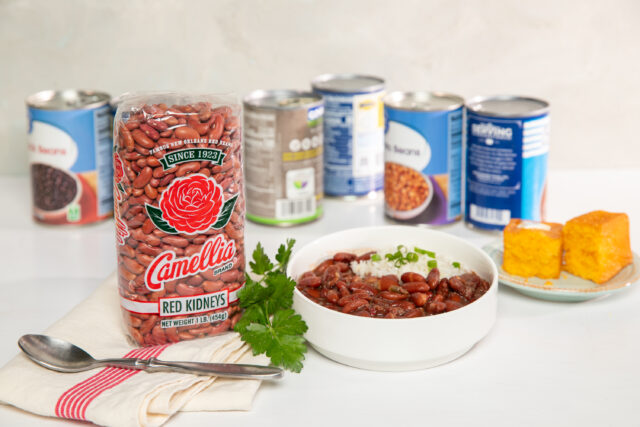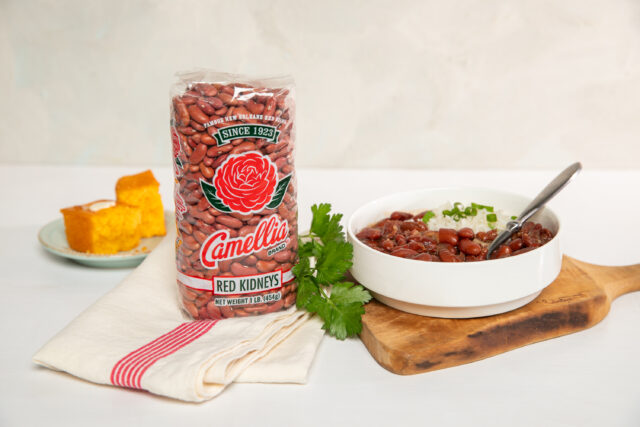Dry Beans vs. Canned: What’s the Difference?

When you’re in the grocery store aisle, gazing at the shelves, you’ve probably wondered — does it really matter whether I choose dried beans or canned? And what’s the difference, anyhow?
Well, here’s the scoop — broken down by cost & yield, taste, convenience, and more — so you can make an informed decision.
Cost & Yield
Dried beans are a better value. The average cost for a can of beans is $1.19 and yields 1 1/2-2 cups of beans, while the average cost for a pound of dried beans is $1.99 and yields 5-7 cups of cooked beans. Our friends here did the math, and that comes out to about 60¢ per cup for canned beans and 25¢ per cup for cooked, dried beans. The bottom line is pretty clear – you’ll save money when you go with dried beans over canned, and you’ll feed more mouths and create more servings in the process. Read more about how to use dried beans to stretch your food budget.

The Sodium Factor
Using dried beans lets you control the sodium. Beans are super healthy, full of vitamins and minerals, protein-packed, and fiber-rich. But canned beans can be high in sodium, which is a problem for those with high blood pressure and those who want to avoid it. According to Dr. Gourmet, there are 400-500 mg of sodium in a 1/2 cup of canned beans. And if you’re on a sodium-restricted diet, that’s about 1/3 of your daily intake. You can rinse canned beans and then heat them in clear water to reduce their sodium, but that still only reduces the sodium content by one third. On the other hand, cooking dried beans allows you to control the amount of salt you put in the pot and therefore the amount of sodium you’re taking in.
What about BPA?
Dried beans are BPA-free. You’ve probably heard or read about the controversial use of BPA in food containers. Most cans are lined with BPA-containing resin, and according to the Mayo Clinic, some research has shown that BPA can seep into food from containers that are made with it. Read more about their advice for reducing exposure to BPA, including cutting back on the use of canned foods. Using dried beans vs. canned lets you avoid the this issue altogether.

Taste
Cooked, dried beans just taste better. While there’s no scientific evidence to point to, it’s been written again and again that those who know their way around a kitchen prefer the taste, texture, and depth of flavor of homemade beans. In fact, canned beans can have a metallic taste, or they can be too salty or mushy. Cooking with dried beans lets you season them to to your taste and control how long you cook them — making sure they’re just as firm or as soft as you like.

Convenience
Dried beans are easier to cook than you think. At first glance, you might think that canned beans win in the convenience category. And if you’re in a pinch and haven’t planned ahead, canned beans can do the job. But if you want the health, price, and taste benefits of using dried beans, there are several ways to make them both easy and convenient. First, if you’re home but busy doing other things, cover them with water in a pot, add aromatics and seasonings, and put on a back burner to simmer for a couple of hours. They don’t need much attention! If you can’t be home to cook, consider throwing dried beans in a slow cooker with water, chopped veggies, and meats, and cook on low heat all day long. They’ll be soft and creamy just in time for dinner. There’s also the option of using a pressure cooker — which is a great way to cook dried beans in a hurry. And finally, the best way to wean yourself from the last-minute-canned-bean-habit is to cook dried beans in large batches, portion into small storage bags, and freeze. Then, when you need beans for a recipe, just grab them from the freezer instead of reaching for a can. Read more about cooking methods and storage here.